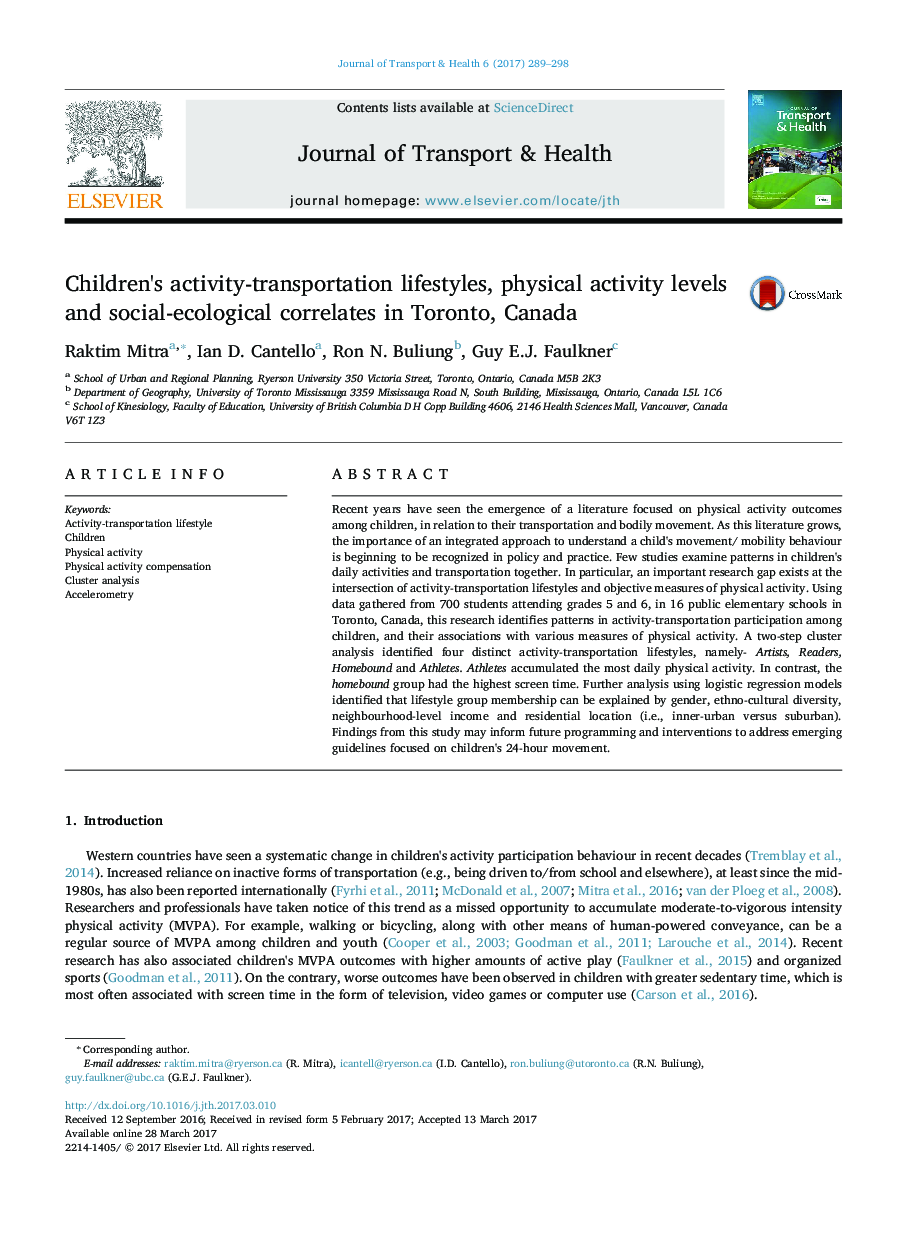| کد مقاله | کد نشریه | سال انتشار | مقاله انگلیسی | نسخه تمام متن |
|---|---|---|---|---|
| 5117665 | 1485455 | 2017 | 10 صفحه PDF | دانلود رایگان |
- Two-step cluster analysis identified four distinct profiles of activity-transportation behaviour among children.
- Measures of physical activity were statistically different across the four lifestyle groups.
- Physically active and sedentary behaviours may co-exist among children.
- Relationship between activity participation, transportation use and physical activity is more complex than what is typically assumed.
- Lifestyles can be explained by a child's gender, ethno-cultural background, income, and neighbourhood location.
Recent years have seen the emergence of a literature focused on physical activity outcomes among children, in relation to their transportation and bodily movement. As this literature grows, the importance of an integrated approach to understand a child's movement/ mobility behaviour is beginning to be recognized in policy and practice. Few studies examine patterns in children's daily activities and transportation together. In particular, an important research gap exists at the intersection of activity-transportation lifestyles and objective measures of physical activity. Using data gathered from 700 students attending grades 5 and 6, in 16 public elementary schools in Toronto, Canada, this research identifies patterns in activity-transportation participation among children, and their associations with various measures of physical activity. A two-step cluster analysis identified four distinct activity-transportation lifestyles, namely- Artists, Readers, Homebound and Athletes. Athletes accumulated the most daily physical activity. In contrast, the homebound group had the highest screen time. Further analysis using logistic regression models identified that lifestyle group membership can be explained by gender, ethno-cultural diversity, neighbourhood-level income and residential location (i.e., inner-urban versus suburban). Findings from this study may inform future programming and interventions to address emerging guidelines focused on children's 24-hour movement.
Journal: Journal of Transport & Health - Volume 6, September 2017, Pages 289-298
